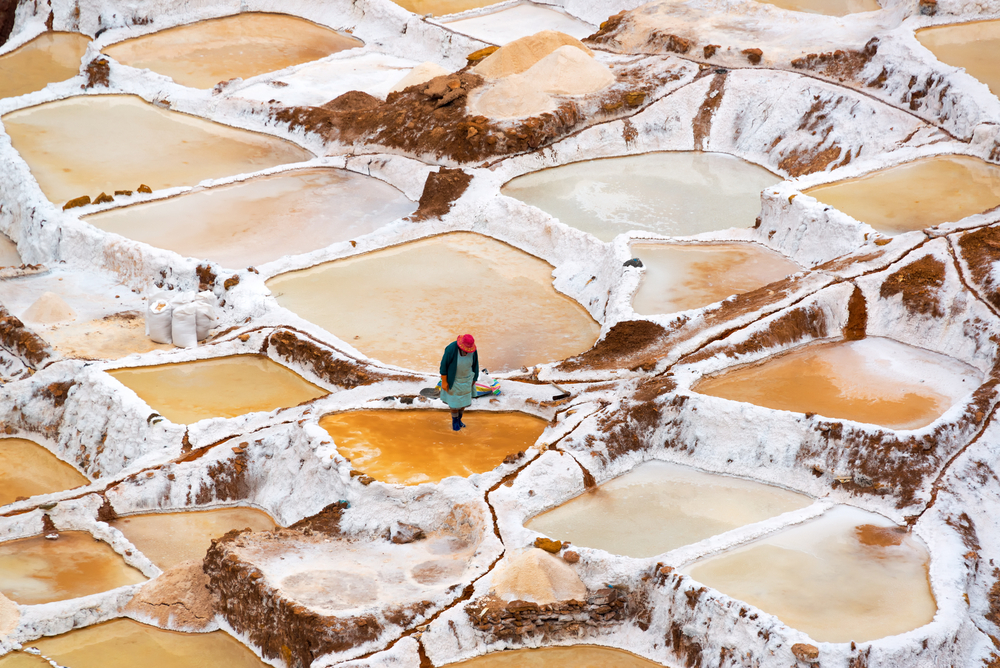A sprawling landscape of some 6,00 salt wells can be found arranged in stepped terraces on the hillside of the Qaqawiñay mountain, Peru. Known as Salineras de Maras, or the Salt Mines of Maras, they are located 52 kilometers (32 miles) northeast of Cusco city and sit at an altitude of 3,200 meters (10,500 feet) in the Sacred Valley of the Incas.
The rest of this article is behind a paywall. Please sign in or subscribe to access the full content.
The shallow ponds are flooded with water from a hypersaline spring that’s believed to have formed around 110 million years ago. The water floods the pools and then evaporates from a combination of wind and the heat of the Sun, leaving behind a thick crust of salt crystals that are scraped away for distribution.
Salt harvesting is dependent on the seasons and much quicker and easier in the dry season, which spans from May to October. The salt harvested in this window is considered to be of better quality according to UNESCO, and comes in aesthetic hues of pink as a result of its high mineral content. Come the rainy season, harvesting gets much harder as the salt turns a less appealing shade of brown.

In the dry season, the best quality salt is obtained with a white or pink color, while in the rainy season, the salt shows tones of brown.
Image credit: Jess Kraft/Shutterstock.com
The salt layers in the modern era are divided into their commercial uses, ranging from kitchen salt to industrial salt used for agriculture and livestock. On average, each well can produce between 150 to 200 kilograms (330 to 440 pounds) of salt per month, and the profits are divided up among those who own them.
It’s thought that the cascade of salt ponds has been a crucial source of sodium for around 500 years. That means they’ve been in use since pre-Incan times, but they were developed and expanded during the Inca Empire around the 15th century.
Advancements in agriculture and irrigation made it possible to expand the Salineras de Maras and they have remained a valuable resource ever since. Over the centuries, ownership and maintenance of the ponds havehas been passed down through generations, cementing the importance of the UNESCO World Heritage site in Peruvian culture.
The Maras salt mines are also steeped in legend; in Inca mythology it’s said that the hypersaline spring is actually the tears of Ayar Kachi, one of four brothers who founded the Inca Empire. Kachi was betrayed by his three siblings who, fearing his strength, tricked him into a cave so that he wouldn’t rise to power.
His resulting anguish gave rise to the salt spring that floods the mountain hillside, and with a bit of ingenuity, we humans found a way to commodify his trauma.
This article first appeared in Issue 25 (August 2024) of our digital magazine CURIOUS. Subscribe and never miss an issue. Subscribe for full access to recent issues delivered to your inbox.
Source Link: The Salt Mines Of Maras: 6,000 Salt Ponds Carved Into Peru’s “Sacred Valley” That Predate The Inca